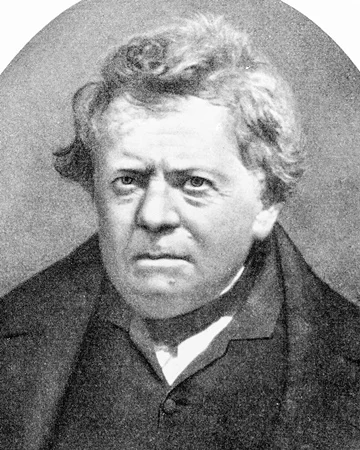Georg Simon Ohm was born in 1789 in Erlangen, Brandenburg-Bayreuth to locksmith Johann Wolfgang Ohm, and Maria Elizabeth Beck. Ohm’s father having been determined to educate himself well was able to give his sons an excellent home education in mathematics, physics, chemistry and philosophy. Only Georg Simon, his younger brother Martin, who later became a well-known mathematician, and his sister Elizabeth Barbara survived to adulthood. His other four siblings perished, and his mother also died when he was just ten years old.
Georg Simon went to school at the Erlangen Gymnasium from age eleven to fifteen but claimed to have learnt little there. His father sent him to Switzerland, and it was there in September 1806, in Gottstadt bei Nidau, that Ohm took a job as a mathematics teacher. After three years in March 1809, he became a private tutor in Neuchâtel in order to be able to also pursue his own studies in mathematics. Two years later in April 1811 he returned to the University of Erlangen where gained his doctorate and began work as a lecturer in mathematics.
Ohm began experimenting in Physics when, in 1817, he accepted a position teaching mathematics and physics at the Jesuit Gymnasium of Cologne. He moved on to work at Polytechnic School of Nuremberg in 1833 and became Professor of Experimental Physics at the University of Munich in 1852. He had become a foreign member of the Royal Society in 1842.
Ohm died in Munich in 1854 and is buried in the Alter Südfriedhof.
Ohm’s law (The electromotive force acting on any part of a circuit is the product of the strength of the current, and the resistance of that part of the circuit.) first appeared in 1827 in his famous publication “Die galvanische Kette, mathematisch bearbeitet.” From this law the Ohm became the SI unit of electrical resistance using the Greek symbol Ω.


Leave a Reply